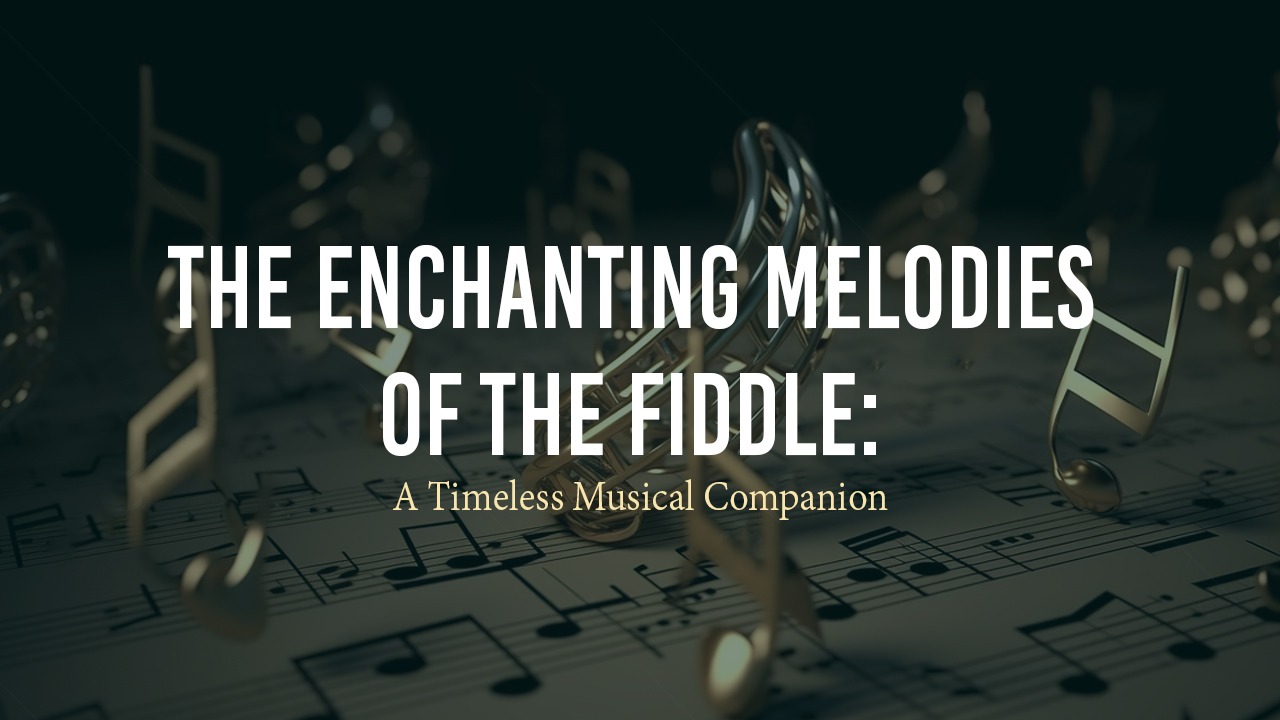Introduction:
Throughout history, certain musical instruments have captivated the hearts and minds of people around the world. Among these cherished instruments, the fiddle holds a special place. With its soul-stirring melodies and distinct sound, the fiddle has become an iconic instrument deeply rooted in numerous cultures and genres of music. From lively Celtic jigs to heartfelt country tunes, the fiddle continues to enchant audiences with its versatility and expressive power. In this article, we will delve into the rich history, unique characteristics, and enduring appeal of the fiddle.
A Brief History:
The origins of the fiddle can be traced back several centuries. Its roots can be found in various stringed instruments from around the world, such as the Byzantine lyra, Arabic rebab, and the European vielle. The fiddle, as we know it today, evolved from these early predecessors and gained prominence during the medieval and Renaissance periods. Its popularity soared during the Baroque era, thanks to the virtuosic performances of renowned composers and musicians.
Characteristics and Construction:
The fiddle is a bowed, stringed instrument with a distinctively curved body, typically made of wood. Its shape, often resembling an hourglass, contributes to its unique sound and resonance. The instrument features four strings, traditionally tuned in fifths: G, D, A, and E. These strings are meticulously crafted from materials like gut, steel, or synthetic materials, each offering a different tonal quality.
While the terms "fiddle" and "violin" are often used interchangeably, there are notable distinctions between the two. Primarily, the difference lies in the musical styles and techniques employed when playing each instrument. The term "violin" is commonly associated with classical music and formal performances, emphasizing precision, technical skill, and a refined tone. On the other hand, the term "fiddle" is often used in folk, country, and traditional music genres, where a more relaxed, rhythmic, and expressive playing style is favored. Fiddlers typically employ techniques such as double stops, slides, and drones, and may add ornamentation and improvisation to their performances, adding a distinct flavor to the music. Additionally, fiddles may have slight variations in construction, such as flatter bridges and a lower string height, allowing for more versatility and ease of playing in various styles.
Cultural Significance:
The fiddle holds deep cultural significance in many regions worldwide. In Celtic music, for example, the fiddle plays a central role in capturing the spirit of traditional dances and storytelling. In Appalachian folk music, the fiddle takes center stage, weaving intricate melodies that resonate with the region's rich musical heritage. Similarly, in country music, the fiddle often serves as a driving force behind the genre's infectious rhythms and heartfelt ballads.
The Appeal of the Fiddle:
The enduring appeal of the fiddle lies in its ability to evoke emotions and create a powerful connection with listeners. Its expressive capabilities allow musicians to infuse their playing with nuances that can range from melancholic and haunting to joyous and energetic. The fiddle's vibrant and spirited sound can transport audiences to different times and places, transcending language and cultural boundaries.
Moreover, the fiddle's accessibility and portability have contributed to its popularity. It is an instrument that can be learned at various skill levels, from beginner to virtuoso, and is often passed down through generations, preserving musical traditions.
Conclusion:
The fiddle's timeless allure continues to captivate music enthusiasts of all ages and backgrounds. With its rich history, distinctive construction, and versatility across genres, the fiddle remains an enduring symbol of musical expression and cultural heritage. Whether played in a lively Irish pub, a bluegrass festival, or a grand concert hall, the fiddle's enchanting melodies continue to resonate in the hearts of listeners worldwide, forging connections that transcend time and space.

Comments